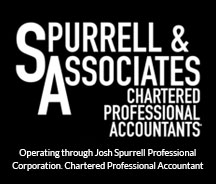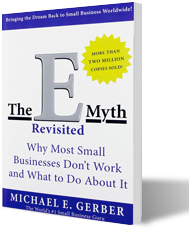Edmonton Bookkeeping | Tax Accounts On Financial Statements
There are several contributing factors to interim financial statements being less accurate says Edmonton bookkeeping. The year-end financial statements that come from an accountant have a high degree of accuracy, and entrepreneurs should be aware that the interim financial statements are not being prepared by an accountant, and therefore more likely to have errors throughout. Whenever an entrepreneur receives interim financial statements, they should be aware of this, and be able to do a quick review in order to guard against any errors that may exist.
One easy way for entrepreneurs to be able to review their financial statements for errors, is by looking at how the different tax accounts look in their financial statements. A business owner should understand that there is going to be 5 tax payable accounts and one tax expense account. By knowing the difference between the 2 different accounts and how it appears on the financial statement can help business owners review for errors, and ensure accuracy. The tax expense account is the area on the financial statement that shows a business owner how much taxes they get assessed throughout the year. This account will show a balance of zero for most of the year simply because entrepreneurs will not get their tax bill until the end of their fiscal year. Once they submit all of their finances to their accountant to work on their corporate year-end, the accountant will figure out how much the business owes in taxes, and make the only entry into that account. If entrepreneurs see that different entries are being made here, they should recognize it as an error immediately.
The tax payable accounts business owners should not know that there are 5 of them all to represent the various taxes that business owners must pay in their business. Every time they make a payment, whatever tax they pay will be indicated in one of those tax payable accounts. Business owners should ensure that they are not having those tax payments show up in other areas such as expense accounts, profit and loss statements, or accounts payable. The only place that a business owner should see taxes are in the tax payable account says Edmonton bookkeeping.
When business owners are reviewing their tax payable accounts, they should understand how those look in order to minimize errors. For example, Edmonton bookkeeping says Canada revenue agency federal taxes and GST tax payments need to be posted in separate accounts all the time. Even though many entrepreneurs may justify the fact that GST is a federal tax, therefore, belongs in the federal tax payment account, this is not accurate, because GST gets its own account.
By understanding how taxes appear on the financial statements, business owners can review all of the various taxes, and ensure that they are being handled properly, and if not they can make that change so that it does not trigger other areas throughout the rest of the financial statements. If that happens, Edmonton bookkeeping says that business owners may not be able to use those financial statements to guide decisions in their business.
One of the most important reasons that business owners need to learn how to review their financial statements say Edmonton bookkeeping, is because any financial statements that are prepared on an interim basis that are not being prepared by a chartered professional accountant may be accurate. Understanding this, and being prepared to review those financial statements when they receive them, business owners can be more prepared to use those financial statements to make important financial decisions in their business. Whether it is using financial statements to check on how effective their marketing strategy is, using it to understand if they can make a big asset purchase, or if they need to or can afford to hire new staff members.
Since paying taxes is a significant financial burden that a business must bear, understanding how that appears on their financial statements can help business owners verify the accuracy of the information. Business owners should understand that all of the taxes that they pay should get posted on the financial statements to their very own tax payable account. All of the various tax accounts that will exist on their financial statement are payroll, GST, federal as well as provincial. The payroll actually has to different payable accounts, one for the source deductions amount, the other for the amount the business owner pays.
In addition to understanding what the various tax payable accounts are, Edmonton bookkeeping says that an entrepreneur also needs to understand how those tax payable accounts look as a business owner makes payments onto them. Most entrepreneurs should be aware that they do not get assessed taxes until the end of their fiscal year, but what entrepreneurs might not know, is what happens when they make a payment onto something that does not have the bill yet. Any time a business owner prepays an expense that does not exist in the financial statement yet, this is going to show up in the financial statement as a negative number. The more payments a business owner makes, the higher that negative number groves. This is extremely important for entrepreneurs to be aware of, so that they do not panic any time they see a negative number in the tax payable accounts.
By becoming extremely well versed in how the taxes that they pay appear on their financial statements can help business owners verify the accuracy of the information in the financial statements. The more often they do this, the more likely those financial statements are accurate when the time comes that the business owner needs them in order to make some financial decisions in their business. Edmonton bookkeeping says that this is very important that business owners learn how to do this early on in their business, so that they can increase their chances of making great financial decisions early on in their business.

